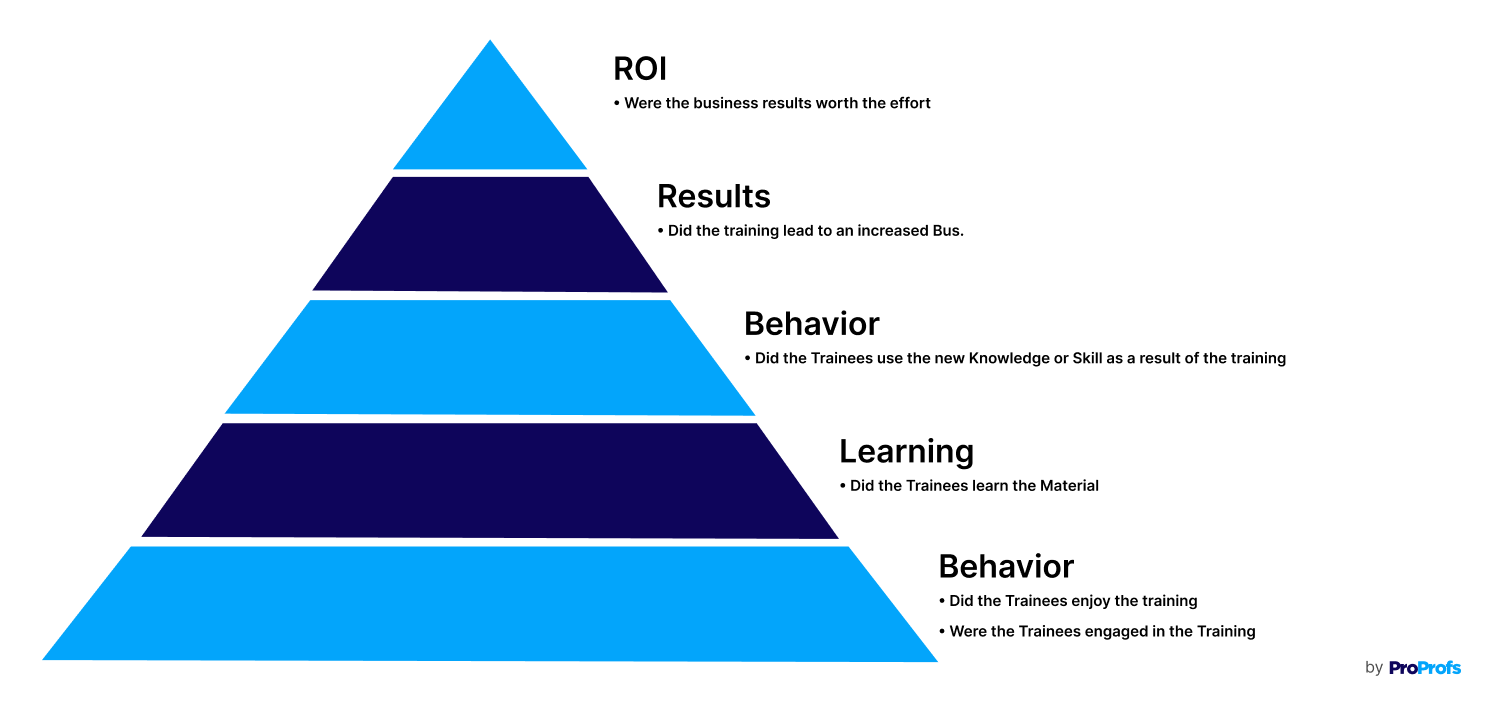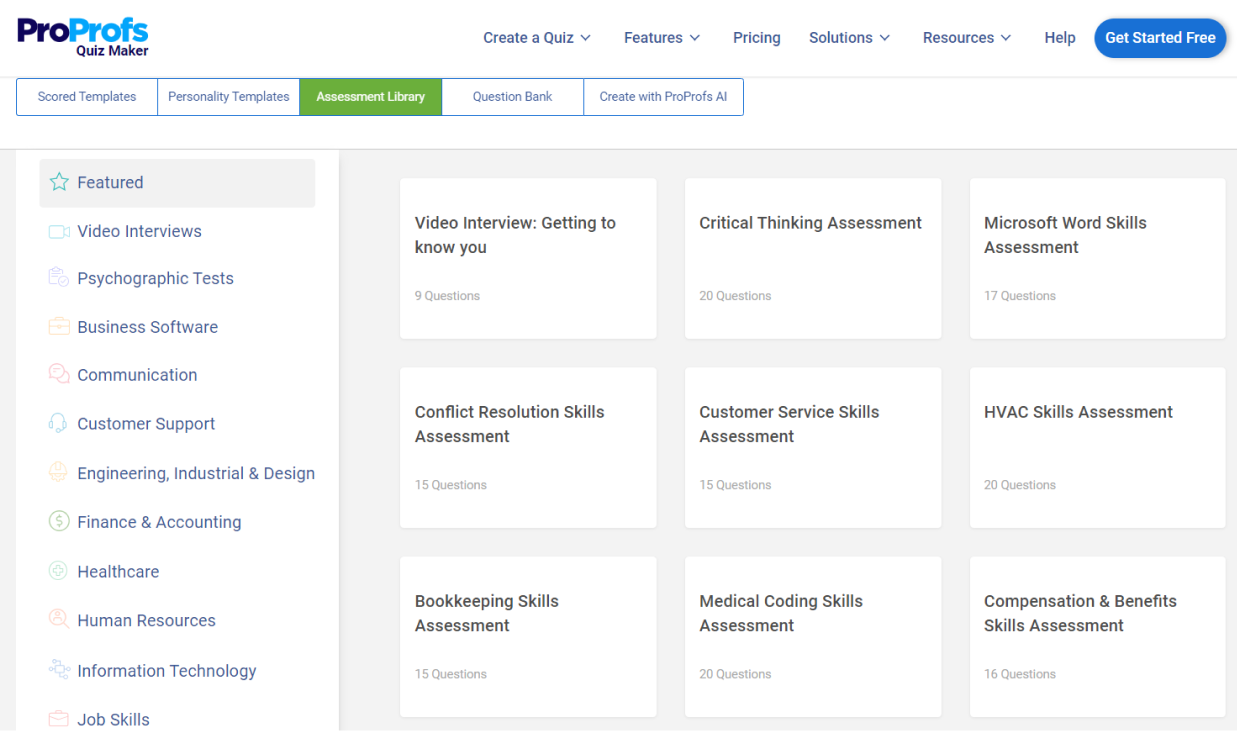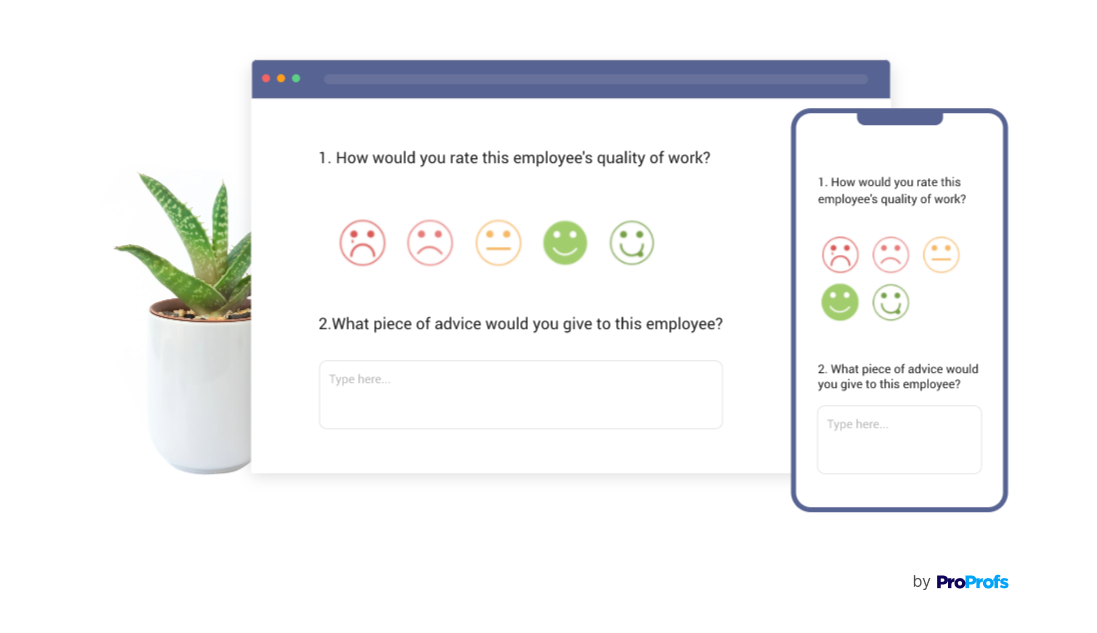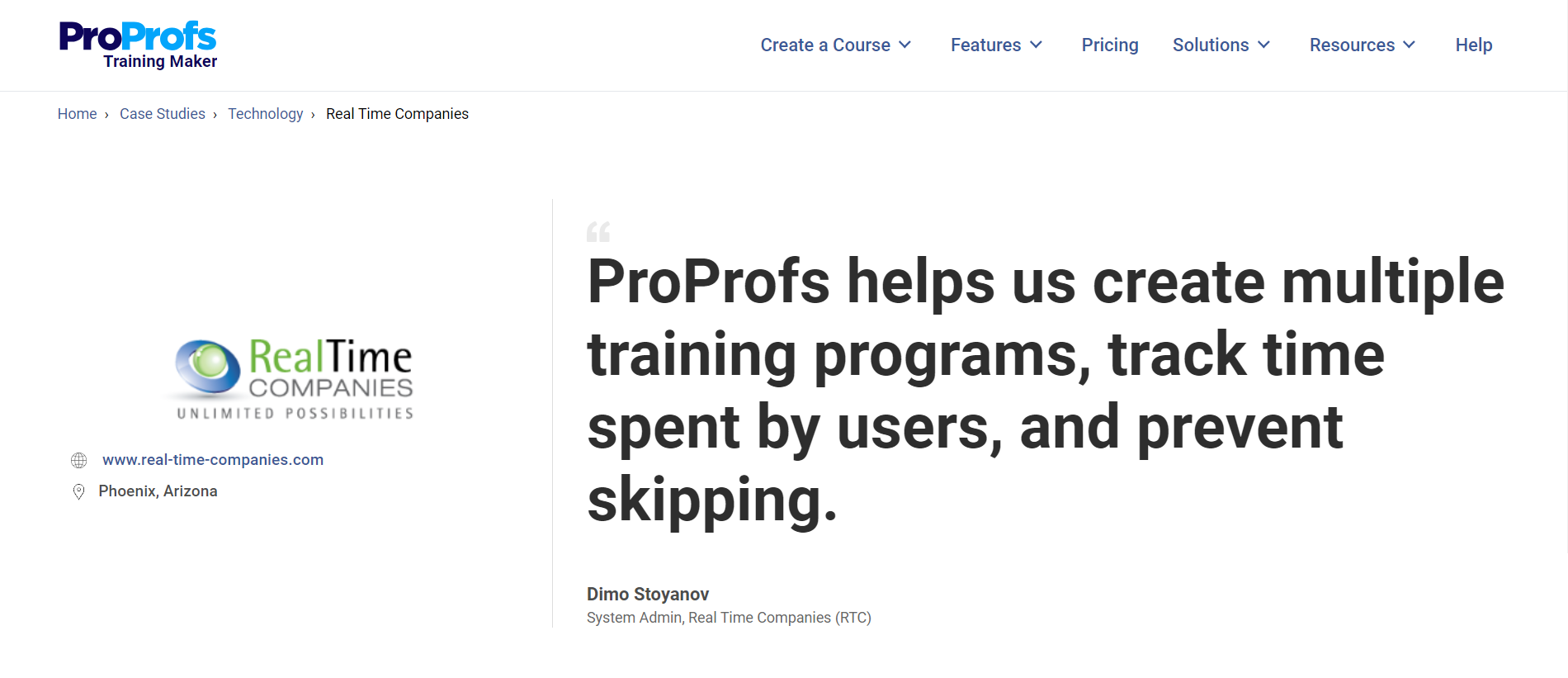Training is an investment, and with businesses increasing their training budgets, it’s crucial to demonstrate that what you’re offering is truly making an impact. Research shows that companies that measure training effectiveness can see up to a 24% increase in profit margins. Simply delivering a training session doesn’t guarantee results. You need to know how to measure training effectiveness.
You’ve probably encountered the same challenges many trainers face: outdated feedback forms, vague survey responses, or relying on the “happy sheet” to gauge success. But those don’t give you the whole picture. You need a more targeted, measurable approach to prove that your training leads to tangible outcomes.
Let’s explore how you can use the latest tools and strategies to measure training success truly. It’s time to level up the tracking of impact.
What Is Training Effectiveness?
Training effectiveness refers to how well a training program achieves its intended goals. It measures whether the training has improved employee performance, skills, and knowledge. It goes beyond completion rates and shows tangible improvements in job performance, behavior, and overall productivity.
When training is effective, employees feel more confident in their roles, and businesses see measurable improvements, from increased efficiency to better customer service.

Why Is it Crucial to Measure Training Effectiveness?
Let’s be real for a second: Have you ever spent days, maybe even weeks, developing a training program, only to feel like it’s just “okay” when all is said and done? You know, the one where employees nod along, pretend to take notes, and you wonder if anyone is actually absorbing anything?
Yeah, that feeling. We’ve all been there.
Now, here’s the kicker: If you’re not measuring training effectiveness, you’re throwing darts in the dark and hoping they hit the target. It’s like trying to bake a cake without checking the recipe. Sure, you’ll get something out of it, but will it be what you hoped for?
Measuring training effectiveness is the only way to determine if your training is hitting the mark or if it’s just another item on the to-do list that gets checked off with no real impact. It’s all about ensuring employees aren’t just learning but applying what they’ve learned to improve their work. And the best part? When you find ways to evaluate training, you get to prove that your training program isn’t just fluff but a strategy that drives business growth.
There’s nothing more frustrating than realizing after a whole training session that employees “learned” something but haven’t changed their approach on the job. The good news is that you can catch these red flags early when you evaluate training effectiveness. Plus, you can tweak programs, optimize delivery, and create a culture of continuous improvement.
So, stop guessing. Start measuring. Because when training works, your business wins. Period.
Top Challenges in Measuring Training Effectiveness (And Ways to Overcome)
Measuring training effectiveness might sound simple on paper—track results, collect feedback, and call it a day. But in reality, it’s like navigating a maze with moving walls.
Challenges crop up everywhere, from data collection to employee behavior, and their complexity often leaves trainers scratching their heads. Let’s examine the real hurdles.
1. Lack of Clear Training Effectiveness Metrics
How do you measure a “better communicator” or a “more efficient team player”? Ambiguous goals and subjective results often make evaluation feel more like guesswork than science. Without clear, measurable KPIs such as course completion rates, average completion time, etc., it’s tough to know if training delivers tangible value or just a temporary morale boost.
Solution: Link training objectives directly to business goals. Use measurable training effectiveness metrics and indicators like productivity improvement, error reduction, or revenue growth. For soft skills, consider 360-degree feedback or pre and post-training surveys with quantifiable questions.
2. Disconnected Business Goals & Training Objectives
Imagine delivering a stellar leadership skills training session only to realize that the business desperately needed improved customer service. Misaligned objectives waste resources and leave you questioning the actual impact of your efforts.
Solution: Collaborate with leadership and department heads before planning. Conduct a training needs assessment to align training content with pressing business objectives. Prioritize programs that address immediate challenges or strategic priorities.

3. Difficulty in Tracking Long-Term Impact
Sure, employees ace the post-training quiz, but are they still applying those lessons six months later?
Capturing long-term outcomes requires consistent follow-up, which often gets lost in the daily hustle of business operations.
Solution: Schedule periodic check-ins, such as follow-up surveys or performance reviews, months after training. Pair these with measurable KPIs, like reduced turnover or higher client retention, to track sustainability.

4. Employee Engagement During Training
Keeping everyone engaged during training is a challenge. Some participants zone out, some multitask, and others think, “This doesn’t apply to me.”
Engagement issues can skew results and undermine the effectiveness of even the best-designed programs.
Solution: Incorporate interactive elements like gamification, role-playing scenarios, and real-life examples. Use personalized learning paths to cater to different skill levels and ensure relevance.
5. Technology and Tools Falling Short
Fancy dashboards and analytics platforms promise insights but often fail to capture the nuances of human learning and behavior. Data might highlight attendance rates or test scores, but do they tell you whether employees are improving?
Solution: Invest in tools that integrate learning analytics with performance management systems. Look for platforms that provide actionable insights. Combine tech data with qualitative feedback for a complete picture.
6. Leadership Buy-In for Measurement Efforts
Getting management to prioritize resources for measuring training effectiveness can be an uphill battle. If leadership views training as a checkbox exercise, the chances of securing a budget or tools for evaluation are slim.
Solution: Build a business case for training measurement. Present data or examples showing how evaluation improves ROI and aligns with strategic goals. Use pilot programs to demonstrate tangible benefits before scaling.
7. Bias in Feedback and Surveys
Employee feedback is invaluable, but it’s also subjective. Some might rate a session highly just because they liked the trainer, while others might give poor marks because they were having a bad day. This bias can skew results and mislead decision-making.
Solution: Design anonymous surveys with neutral, specific questions. Use a mix of qualitative and quantitative approaches to cross-check responses. Train evaluators to minimize subjective bias in their assessments.
8. Evaluating ROI in Complex Work Environments
In organizations with multiple departments and interconnected roles, isolating the impact of training can feel impossible. Was that sales spike due to the new training, or was it just seasonal demand?
Solution: Use control groups where possible and compare metrics for those who received training versus those who didn’t. Look at trends over time instead of immediate spikes.
9. Balancing Measurement Efforts and Day-to-Day Work
Measuring effectiveness requires time, effort, and resources. But when teams are already stretched thin, tracking training outcomes can feel like an extra chore no one has bandwidth for.
Solution: Automate training evaluation processes using LMS analytics or feedback tools. Simplify data collection with short surveys or checklists and integrate measurement efforts into regular workflows, like monthly performance reviews.
10. Resistance to Change
Even if training is effective, not every employee will embrace change. Measuring success becomes complicated when resistance prevents adopting new skills or processes fully.
Solution: Involve employees early by communicating the “why” behind the training. Use peer champions or leaders to set examples. Provide follow-up support like coaching sessions or refreshers to reinforce adoption.
These challenges highlight why measuring training effectiveness is about overcoming real-world obstacles. It requires strategic thinking and a deep understanding of business goals and employee behavior. By addressing these hurdles head-on, trainers can deliver results that make a difference.
How to Measure Training Effectiveness: Top 4 Methods
Sticking with traditional methods is fine when evaluating training success, but they may not be enough in 2025. The key is to combine classic techniques with modern approaches that offer deeper insights.
Let’s examine some established methods of evaluating training effectiveness so you get an accurate picture of how your training program is performing.
- Pre- & Post-Training Assessments: These remain among the most reliable ways to evaluate whether employees have gained the necessary skills. Administering a quiz or test before and after the training provides measurable results, helping you understand the knowledge gained during the session.
- Employee Feedback: It’s not enough to ask, “Are you satisfied with the training?” anymore. Get specific. Use detailed surveys to gauge how employees feel about the content, delivery, instructor, and applicability of the training. This helps improve your future programs and ensures that learners retain valuable information.
Take the next step in building a happier, more productive workforce. Take this course today and see how effective feedback can transform your workplace.
- Behavioural Observations: One of the most effective ways to measure success is to watch employees apply what they’ve learned in real scenarios. Are they implementing the skills on the job? If yes, your training worked. If not, it’s time to revisit your approach.
- Performance Metrics: Align training goals with measurable business outcomes, like increased productivity, improved quality, or higher sales. By tracking key performance indicators (KPIs), you can directly link your training to organizational results.
Get Free Employee Training Software — All Features, Forever.
We've helped 567 companies train 200,000+ employees. Create courses in under a minute with our AI LMS or use 200+ ready-made courses on compliance, harassment, DEI, onboarding, and more!
Innovative Ways to Measure Training Effectiveness
Now, let’s look at innovative ways for changing the game in training evaluation. These techniques use technology and modern insights to provide a more holistic and futuristic view of training success.
- Learning Analytics Dashboards: A great way to track how employees interact with your training is through real-time data on a dashboard. These dashboards show course completion rates, total time spent on courses, and pending courses. Having a centralized place where you can monitor training effectiveness is an efficient way to make data-driven decisions.
- AI-Powered Analytics: With AI tools, you can analyze vast amounts of data to predict how well training will impact employee performance. AI-driven software can track engagement, predict learning paths, and suggest personalized training interventions based on real-time performance data.
- Gamification: Training doesn’t have to be boring. Adding game elements like points, leaderboards, or challenges can make the training experience more engaging. Gamification motivates employees and helps measure their success in real-time based on achievements or milestones within the training program.
- Simulations & Virtual Reality (VR): Immersive technology transforms training evaluation. VR allows employees to engage in simulated environments to practice skills and receive immediate feedback. Using VR simulations, you can see how well employees perform in scenarios that mirror real-world situations.
That was all about the various ways to check training effectiveness. Now, let’s explore how an LMS can help you.
The Role of an LMS in Measuring Training Effectiveness
Picture this: you’ve rolled out a shiny new training program, but how do you know if it’s working? This is where an LMS steps in like a superhero for trainers.
- Tracks Progress: It keeps tabs on who’s completing what and how fast. No more guessing who’s lagging.
- Real-Time Updates: It shows live data on scores, completions, and performance. You stay in the know without waiting for reports.
- Custom Reports Made Easy: Forget manual tracking. An LMS gives you ready-made reports on users that highlight what matters most.
- Monitors Engagement: It reveals who’s actively participating and who’s zoning out.
- Personalized Insights: It adjusts training paths to fit each learner’s pace, making your sessions more effective.
- Connects to Business Goals: Want to show ROI? It links training metrics directly to outcomes like productivity or sales growth.
- Feedback Collection: An LMS helps gather learner input so that you can tweak and improve your program instantly.
An LMS doesn’t just measure training; it transforms it into a data-driven success story. It’s like having a personal assistant who ensures your training hits every mark. Here’s a case study that proves how effective an LMS can be in tracking training programs.

How to Use Effectiveness Data to Optimize Future Learning
Start by spotting trends. If learners breeze through some modules but struggle with others, you know where to tweak them. Look at completion rates. Are people dropping off midway? It’s time to rework those dull sections.
Check feedback closely. If learners say they want more visuals or shorter sessions, listen. Align the data with business goals. If productivity isn’t improving after training, it’s a red flag to adjust your approach.
Test changes in real time. Update content, roll it out, and track immediate results. Small tweaks can lead to big wins.
By using data to refine your programs, you’re building a system that evolves and gets smarter every time.
Stop Guessing & Start Measuring Training Effectiveness!
So, there you have it. No more fuzzy feelings or guesswork. We’re in 2025, and it’s time to ditch the “hope it sticks” training mentality and embrace a data-driven revolution. By combining the classic techniques with cutting-edge tools and a sprinkle of innovation, you can transform your training programs from “meh” to “WOW!” Remember, measuring training effectiveness isn’t just about numbers but about empowering your people, proving your impact, and driving your business forward. Now go forth and make every training session a measurable success! Sign up to create, measure, and track your training programs.
Get Free Employee Training Software — All Features, Forever.
We've helped 567 companies train 200,000+ employees. Create courses in under a minute with our AI LMS or use 200+ ready-made courses on compliance, harassment, DEI, onboarding, and more!
Frequently Asked Questions
How do you measure training effectiveness in the workplace?
Use a mix of methods like employee feedback, performance metrics, and post-training assessments. Align outcomes with business goals to see if skills translate into measurable improvements in productivity or results.
What are the best tools for evaluating training programs?
LMS platforms, survey tools, and analytics software work well and they help track participation, gather feedback, and measure learning outcomes effectively.
How often should training effectiveness be assessed?
Regularly. Assess immediately after training, then follow up quarterly or bi-annually to track long-term impact on performance and retention. Adjust based on program goals and organizational needs.
How to avoid common mistakes in training evaluation
Define clear objectives, choose relevant metrics, and avoid relying solely on completion rates. Engage employees for honest feedback and use consistent methods to ensure reliable results.
 Tips
Tips
We’d love to hear your tips & suggestions on this article!


 We'd love your feedback!
We'd love your feedback! Thanks for your feedback!
Thanks for your feedback!








